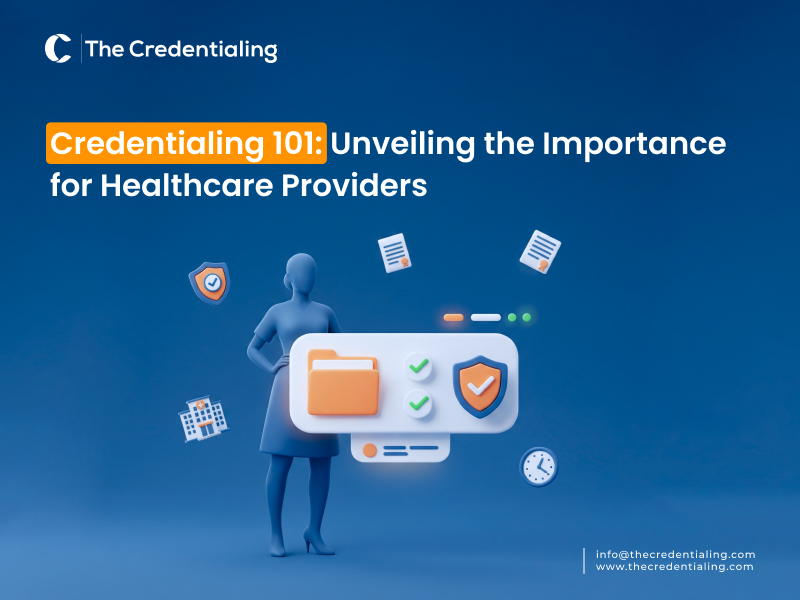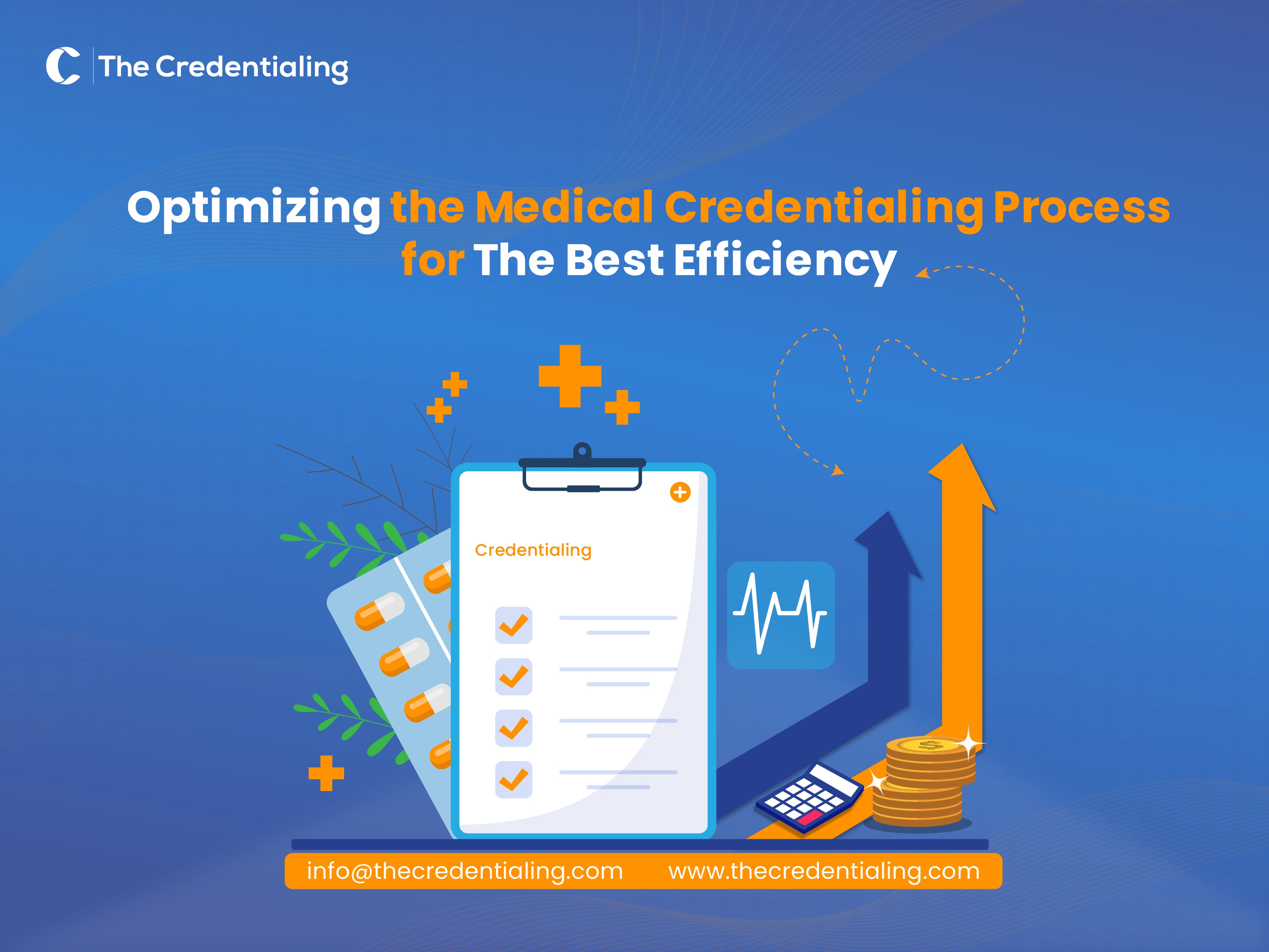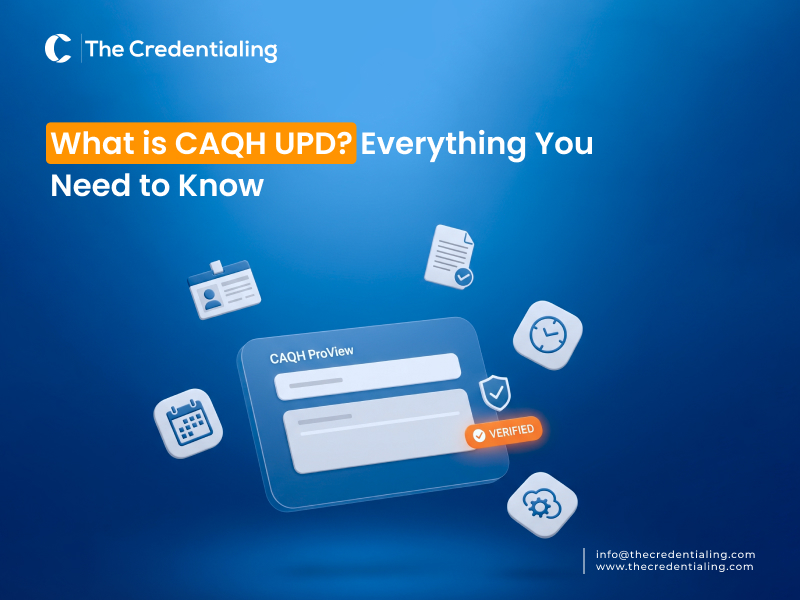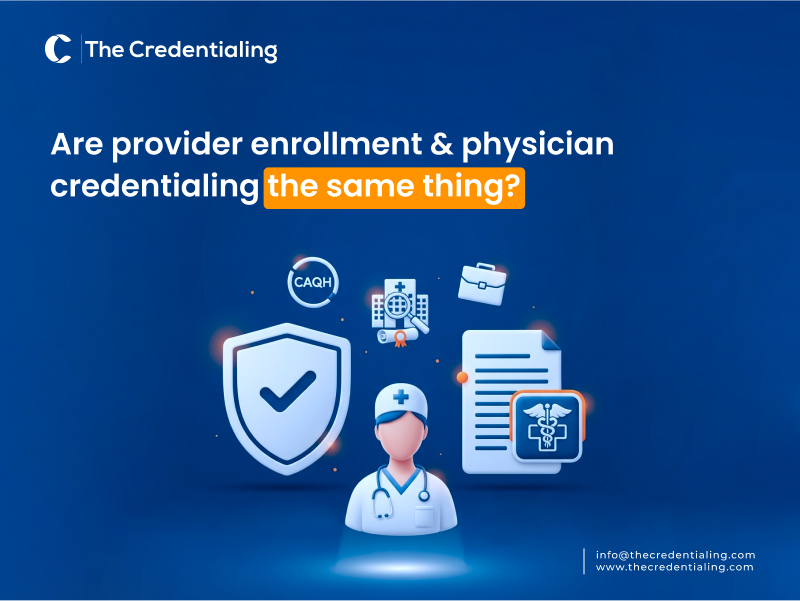Credentialing 101: Unveiling the Importance for Healthcare Providers
Discover the essentials of credentialing for healthcare providers in the USA. Learn why it's critical for compliance, reputation, and professional growth.
Schedule Free Demo Today
Do you know that 8 out of 10 patient claims are rejected initially due to the lack of new providers’ proper credentialing? It’s clear now that credentialing isn’t just the process but the protection of your practice.
Especially in a system where compliance and quality are never compromised, there isn’t a chance of skipping the process. It is more than a necessity rather than an option to run a successful medical practice or facility of any type.
Basically, the process refers to the provider's verification of education and qualifications, including licenses, education, training, and work history. This is to ensure the professionals are eligible to operate while providing patient care, while adhering to the strict regulations.
In fact, healthcare provider credentialing is crucial to maintain trust, reduce liability and ensure compliance with state, federal, and payer regulations. In case of non-credentialing, practices and professionals may face unexpected issues such as reported by the CAQH (2024), “more than 90% of hospitals and health plans report delays caused by the incompleteness of the process.
Although the terms such as Credentialing, Privileging, and Enrollment in healthcare are used interchangeably, each serves a different purpose. Credentialing confirms a provider’s qualification, while privilege offers a provider certain clinical responsibilities within the facility. However, enrollment connects providers with insurance payers for reimbursement.
This guide covers all about Physician Credentialing 101, as it is a detailed explanation of key terms in the process. There are the types of credentialing in healthcare, and the importance of why and how getting credentialed with an insurance network adds quality to your work and revenue.
Credentialing 101: The Major Types & Their Functions
Credentialing in healthcare comes in various categories, each having its distinct purpose and function. However, all processes ensure that healthcare providers meet the quality standards before providing care, ensure specific privileges, and participate in the insurance network. Here’s a breakdown of key types:
Provider Credentialing:
-
Confirms a clinician’s qualifications, licenses, and work history.
-
Required for new providers joining a care setting or need to provide care at a different location.
-
Verification of education, training and work experience while licensure is essential.
Payer Credentialing/ Provider Enrollment
-
The process enrols providers with insurance companies and health plans.
-
Essential for providers to get reimbursed for services rendered to insured patients.
-
The process follows the state-specific applications, such as CAQH ProView, negotiating contract terms and fee schedules.
Facility or Hospital Credentialing Requirements
-
The process grants providers admitting privileges at hospitals and outpatient centres.
-
Includes verification of board certifications, malpractice history or other specific qualifications.
-
Hold specific requirements for provider credentialing to ensure adherence.
Credentialing Maintenance/ Re-Credentialing
-
An ongoing process to keep credentials up-to-date.
-
Re-verification of provider credentials every two to three years.
Specialized Credentialing Types
These are the credentials aspects that include initial credentialing, provisional credentialing, privilege, and telehealth credentialing.
What is the Credentialing Process Flow Chart (Overview)?
A credentialing flowchart is used in healthcare by professionals to stay organised to a clear understanding of the process steps. The chart is an organised file that helps both the applicant and the credentialing entity to fulfil the process timely. Moreover, the chart serves consistency across all the steps while keeping the professionals compliant with the regulations.
Here’s what a common credentialing flowchart includes:
-
Application submission
-
Primary source verification
-
Credentialing committee review
-
Approval and network enrollment
The Credentialing Process Flow: Step-by-Step Guide!
Credentialing for providers is a time-consuming process without the proper approach and understanding of the sequence of steps. For Physician Credentialing to be successful, there are crucial steps to follow for hospitals and healthcare practices:
Identification of Required Documentation
Healthcare providers must ensure awareness of each insurance company’s credentialing requirements, such as the documentation and forms. The complete submission of those files will confirm the provider's participation in the insurance network. However, any minor missing information may cause a delay in the process and reimbursement.
Choose Insurance Companies
Since the providers need to submit multiple applications, it’s better to be specific about which insurance provider comes first for data submission. Each insurance payer has specific credentialing requirements to get familiar with.
Take an example, the “Atena” offers an easy standing for providers already insured in another state that yields quicker approval. On the other hand, the other insurance providers bear a distinct scenario. Hence, better you keep your preparations according to your priority in hand to avoid delays.
Accuracy of Information Always Wins
Even if you follow the entire process of data collection comprehensively but make sure accuracy of details and quality come first, above all other requirements. Make sure you are double-checking credentials such as board certifications, license, background history, and all while verifying the sources like the American Medical Association (AMA).
The Education Commission for Foreign Medical Graduates Certification (ECFMG), and the American Board of Medical Specialities. Such reputed sources will help you have a critical review of history and privileges and list sanctions recorded with the Office of Inspector General (OIG).
Document verification in healthcare is frequently conducted by the manual method, which may easily lead to errors while consuming a significant time. Outsourcing your credentialing document verification isn’t just an innovation but relief from many surprises. Try TheCredentialing digital portal for credentialing that handles all your process steps with advanced security and efficiency while saving time.
Complete the CAQH Profile
Given that many healthcare providers require facilities to submit the data through the Council of Affordable Care (CAQH), this is the key to ensuring the provider profile. On applying, the user receives a CAQH number. This helps the provider to fill the form online; however, inaccuracy in any step of information provision may result in delays. Hence, re-attestation is the next essential step to follow that maintains continuous insurance eligibility.
After the application submission, the provider needs to wait for approval from the credentialing committee, which may take 90-120 days. However, continuous follow-ups may also lead to timely approvals. Finally, recertification is the last step of the process, yet it doesn't consolidate the steps due to the ongoing nature and requirements of credentialing. Healthcare providers need to re-verify their credentials at various intervals to ensure they stay up-to-date with the regulations.
Credentialing Impact on Insurance Reimbursement: Why Credentialing Matters?
Credentialing with insurance companies allows providers to bill patients for the services delivered, while provider enrollment is necessary for all organisations, such as hospitals, physician practices, and independent practitioners, that can receive reimbursement from a third-party insurance provider, including Medicare and Medicaid.
Improper credentialing steps lead practices directly to the costly consequences for the practice's revenue cycle management (RCM). Healthcare services provided by professionals who are not enrolled with a health plan get their claims denied and reimbursement delayed, which even further slows the process, such as revenue loss, added administrative workload, and a slower reimbursement process.
In contrast, a timely credentialing works efficiently to streamline the process without the risk of delays and unexpected reimbursement flow.
What’s New in Credentialing: Trends & Best Practices following Provider Credentialing Checklist
Amidst the critical functions, the healthcare professionals must follow some notes, including staying organised, starting the process earlier, and integrating with credentialing software to make the work efficient and worthy of efforts. Tech advancement has an effective role in accelerating the process, yet their focus on some core practices is crucial, which is possible with having a Physician credentialing checklist:
Best Practices for a Flawless Credentialing:
-
Keep copies of core documents, including state license, DEA certificate, malpractice insurance, board certification and updated CV.
-
Maintain an active CAQH profile with timely attestation every 120 days to avoid processing delays.
-
Track expiration dates for key credentials, such as medical licenses, liability insurance, and controlled substance registrations.
-
Use a secure digital storage system to organize credentialing files for quick access and audits.
-
Ensure all practice locations, NPI numbers, and taxonomy codes are up-to-date in applications.
-
Collect and verify peer references and hospital privileges where applicable.
-
Double-check that work history is listed without unexplained gaps, as this is a common rejection point.
-
Follow payer-specific requirements for forms, documentation, and submission methods.
-
Conduct regular internal reviews to stay audit-ready and compliant with both CMS and commercial payer standards.
New Trends in Process:
-
Digital credentialing portals, such as TheCredentialing, streamline applications and enable real-time tracking.
-
Automated expiration alerts now help prevent issues in licenses, DEA, and malpractice coverage.
-
More payers are requiring electronic CAQH re-attestation and secure e-signatures for faster verification.
-
Credentialing APIs allow integration with EHRs and HR systems for seamless data sharing.
-
Telehealth provider credentialing is now widely supported, with remote-specific compliance rules.
-
Increased focus on background checks and social media screenings during credentialing reviews.
-
States are increasingly adopting centralised verified organisations (CVOs) to reduce redundancy.
-
Credentialing timelines are being shortened with the use of AI for document parsing and verification.
-
Multi-state licensure support tools help manage provider credentials across compact states efficiently.
Need Insurance Credentialing Support? Switch to TheCredentialing – S
Working with varying insurance companies takes a toll, especially when your practice is operating resources manually. Take the step ahead to the digital world that is easier to access than ever. TheCredentialing is a leading insurance credentialing process and provider enrollment services provider that has a top value among professional provider credentialing processes.
Let us handle credentialing chaos digitally while adding an extra layer of data security and speed so your practice can have approved care providers and a flawless insurance reimbursement. Our digital credentialing software makes it efficient to access, edit, and update your data for a streamlined credentialing application.
As for the rest of the process steps, TheCredentialing digital portal manages without the risk of errors, so you can make the most of your time, worthy of providing care and satisfying your patients.
Sit Back and Relax! Let The Pros Handle Credentialing For You!
thecredentialing has built a strong portfolio while providing credentialing services to clients over the years. Our service includes helpful features that you won’t find anywhere else.
Schedule Free Demo Today!

